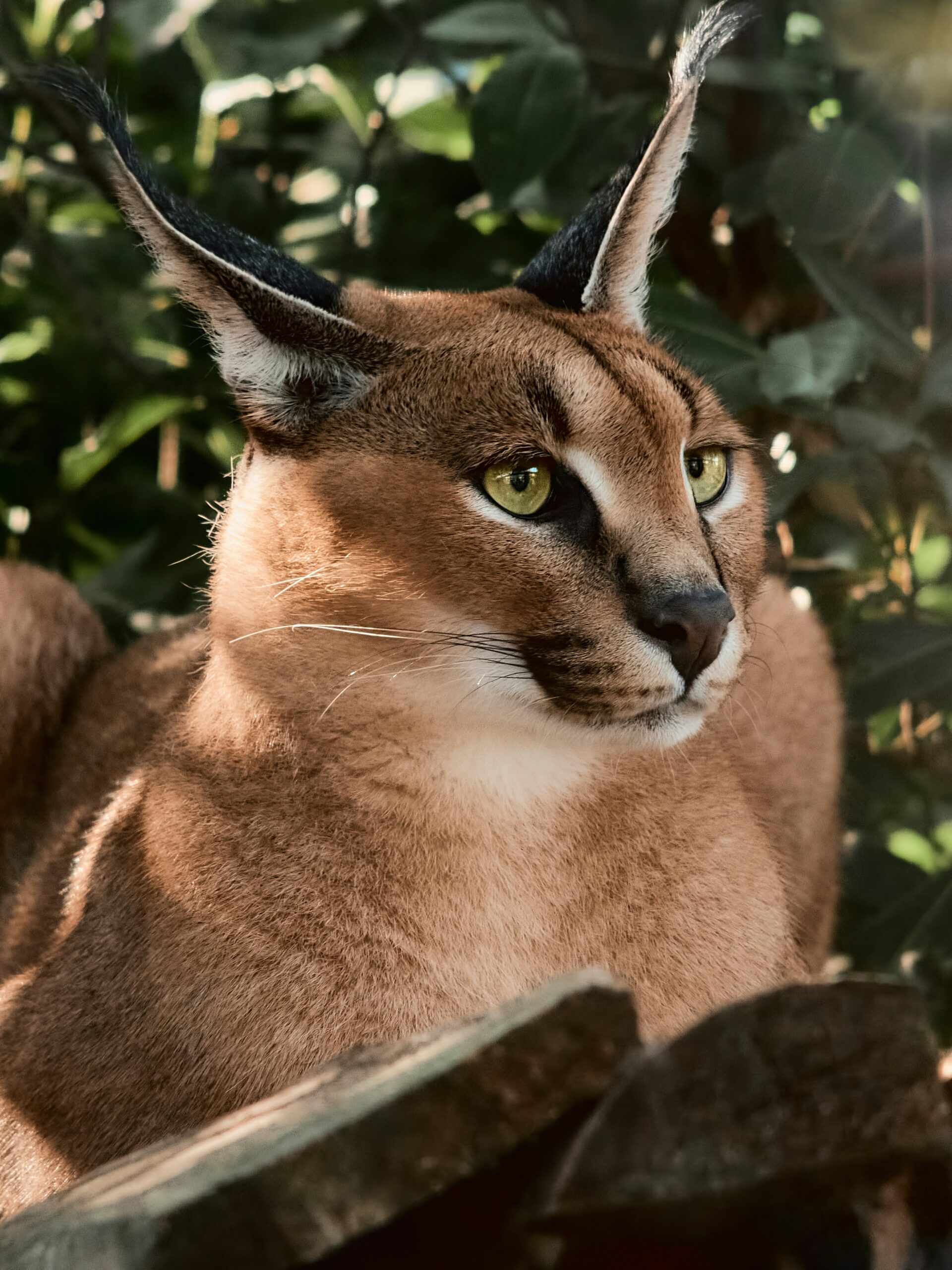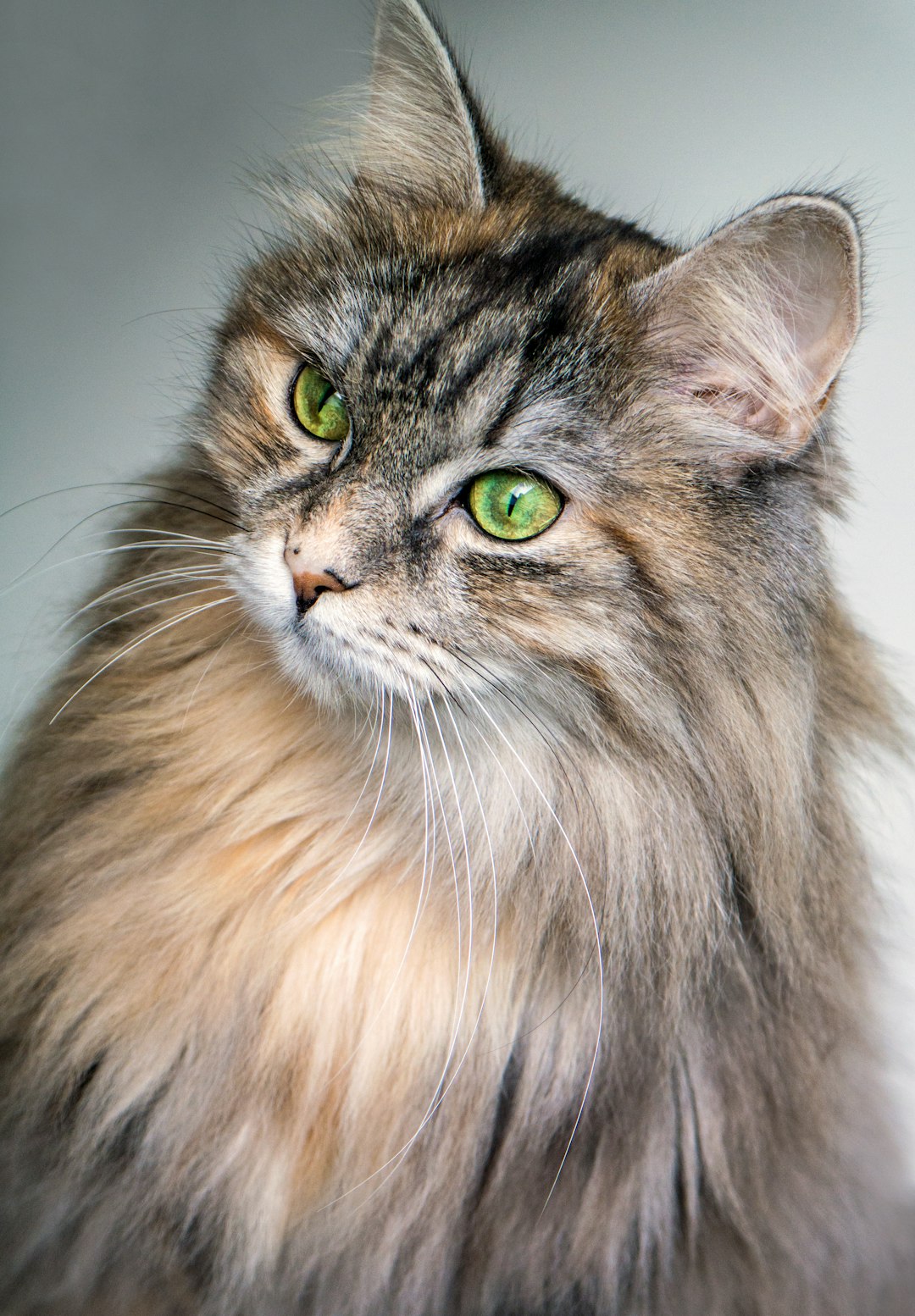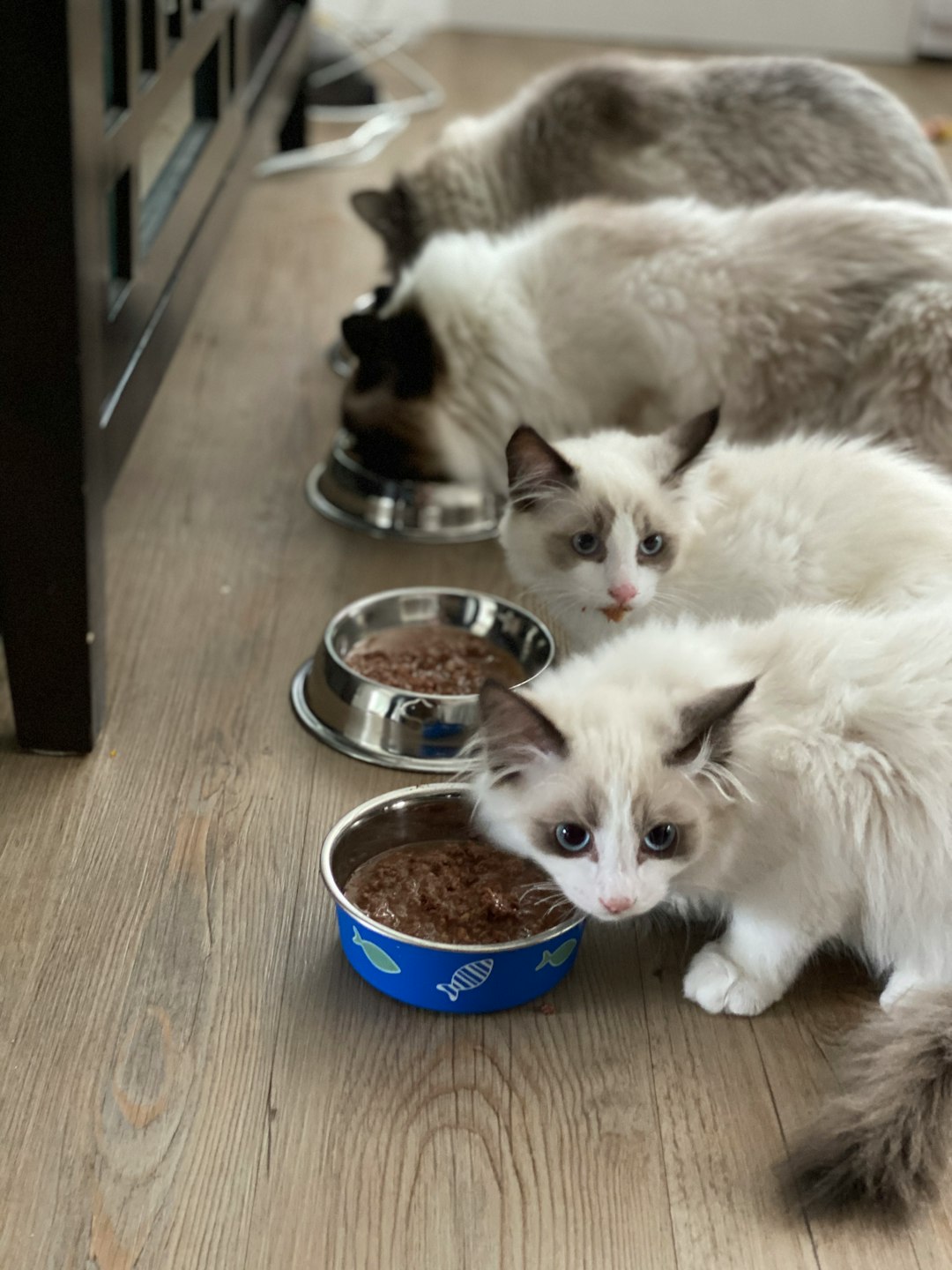The Caracal cat, an intriguing wild feline, captivates many with its striking features and unique behaviors. Native to Africa and parts of Asia, this adaptable predator exhibits remarkable agility and sharp hunting skills. As we delve into 2024, understanding the physical attributes, habitat, and social structures of the Caracal becomes increasingly vital for their conservation. By exploring their diet, reproduction, and the challenges they face, we can appreciate their role in biodiversity and discover ways to support these remarkable creatures in their natural environment.
Introduction to the Caracal Cat
The Caracal cat, known scientifically as Caracal caracal, is a medium-sized wild cat native to Africa, the Middle East, and parts of Central Asia. With its distinctive tufted ears and striking appearance, this feline captivates animal enthusiasts around the globe. Here are some key points about the Caracal:
Physical Features: Caracals have a sleek body, long legs, and distinctive, pointed ears adorned with black tufts. Their coat is typically a reddish-brown, providing excellent camouflage in their habitat.
Behavior and Abilities: Renowned for their agility, Caracals are exceptional climbers and jumpers. They can leap over 10 feet to catch birds in mid-air.
Adaptability: These cats thrive in diverse environments, including savannas, shrublands, and forests, showcasing their adaptability to various conditions.
Solitary Nature: Caracals are primarily solitary, with males and females coming together only for mating, emphasizing their independent lifestyle.
In summary, the Caracal cat is a remarkable species with unique adaptations that allow it to survive and thrive in various habitats. Its intriguing behavior and characteristics make it a fascinating subject of study for wildlife enthusiasts and researchers alike.
Physical Characteristics of the Caracal
The caracal cat, known for its striking appearance, exhibits several distinctive physical traits. Here are the key characteristics that define this unique wild cat:
Size: The caracal typically measures between 40 to 50 cm (15.7 to 19.7 inches) in height at the shoulder. They weigh around 8 to 19 kg (17.6 to 41.9 lbs), with males being generally larger than females.
Fur and Coloration: Their coat features a short, dense layer of fur that ranges from reddish-tan to golden-brown. This coloration allows them to blend seamlessly into their dry, brushy habitats.
Ears: One of the caracal’s most distinctive features is its elongated, tufted ears, which can grow up to 5 cm (2 inches) long. These tufts help enhance their hearing capabilities.
Eyes: Caracals possess striking almond-shaped eyes, which vary in color from amber to green, providing excellent night vision.
Limbs: With long, powerful legs, caracals are agile and capable of impressive leaps, aiding in their hunting strategy.
Here’s a quick comparison to another wild cat:
| Feature | Caracal | African Lion |
|---|---|---|
| Height (at Shoulder) | 40-50 cm (15.7-19.7 in) | 120 cm (47 in) |
| Weight | 8-19 kg (17.6-41.9 lbs) | 150-250 kg (330-550 lbs) |
| Ear Tufts | Yes (up to 5 cm) | No |
These unique physical characteristics make the caracal a fascinating example of wildlife adaptation.
Habitat and Distribution of the Caracal
The caracal, known for its striking appearance and agility, primarily inhabits various ecosystems. Understanding its habitat preferences is crucial for effective conservation efforts. Here’s a breakdown:
Geographical Range:
- Found across Africa, the Middle East, Central Asia, and parts of India.
Preferred Habitats:
- Savannas: Open grasslands provide ample prey and space to hunt.
- Semi-deserts: Adapts well to arid landscapes with sparse vegetation.
- Wooded Areas: Utilizes forested zones for cover and hunting opportunities.
Urban Presence: While typically wild, caracals sometimes venture into urban areas, adapting to human presence, especially in regions close to their natural habitats.
| Habitat Type | Characteristics | Caracal Adaptation |
|---|---|---|
| Savanna | Open and grassy | Excellent at stalking and pouncing on prey in open spaces. |
| Semi-desert | Arid with minimal vegetation | Can survive on limited water resources and hunt nocturnally. |
| Wooded Areas | Dense tree coverage | Utilizes cover for ambush tactics, enhancing hunting success. |
In summary, the caracal thrives in diverse environments, showcasing its adaptability and resilience in the wild.
Diet and Hunting Behavior of the Caracal
The Caracal, a remarkable wild cat, boasts diverse hunting skills tailored to its natural habitat. Its diet primarily consists of:
- Small mammals: Such as rabbits and rodents
- Birds: Particularly ground-nesting species like partridges and pheasants
- Reptiles: Occasionally hunting lizards and snakes
Hunting Techniques
Caracals exhibit impressive hunting techniques, which include:
- Stalking: They stealthily approach prey before launching a rapid sprint.
- Pouncing: Using their powerful hind legs, they leap up to 10 feet to capture birds in mid-flight.
- Camouflage: Their tawny coats help them blend into the savannah and grasslands, making them excellent ambush predators.
Comparison of Diet with Other Wild Cats
| Wild Cat | Primary Diet | Hunting Technique |
|---|---|---|
| Caracal | Small mammals, birds | Stalking & pouncing |
| Cheetah | Antelopes | Sprinting during the day |
| Lynx | Small mammals, birds | Stealthy hunting, more solitary |
In summary, the Caracal’s hunting prowess and varied diet make it a formidable predator, showcasing its adaptability in the wild.
Social Structure and Behavior of the Caracal
Caracals exhibit fascinating social structures and behavior patterns that contribute to their uniqueness. Here are some key aspects:
Solitary Lifestyle: Typically, caracals are solitary animals, preferring to hunt and live alone. Males have larger territories than females and may overlap slightly with their home ranges.
Territorial Marking: Caracals communicate through scent marking. They use urine and feces to outline their territory, ensuring potential rivals stay away.
Vocalizations: While they are mostly silent, caracals produce various sounds, including growls, hisses, and purrs, to express different emotions and needs.
Hunting Techniques: Known for their remarkable agility and leaping ability, caracals often hunt during the night (nocturnal). They primarily prey on birds, rodents, and small mammals.
Social Interactions: During the breeding season, males may challenge each other through displays of aggression or vocalizations to win over females.
In summary, understanding the social structure and behavior of caracals sheds light on their adaptability in various environments, helping conservationists develop effective strategies for their protection.
Reproduction and Life Cycle of the Caracal
The reproductive cycle of the caracal features fascinating behaviors and stages. Here are key points about their reproduction and life cycle:
Mating Season: Caracals breed year-round, with peaks depending on geographical locations. In some areas, mating occurs more frequently during the rainy season.
Gestation Period: The gestation lasts about 68 to 78 days, leading to the birth of 1 to 6 kittens, typically 2 to 4.
Nurturing: After birth, the mother raises her kittens alone, moving them to different dens for protection. She provides nourishment through nursing and will wean them around 8 to 10 weeks.
Independence: Kittens begin to hunt small prey at around 3 months old but stay with their mother for 6 to 12 months, learning vital hunting skills.
Maturity: Caracals reach sexual maturity between 12 to 15 months of age, but males may not mate until they’re around 24 months old.
This unique reproductive process plays a crucial role in ensuring the survival and adaptability of caracal populations across various habitats.
Conservation Status of the Caracal
The conservation status of the caracal cat is currently classified as Least Concern by the International Union for Conservation of Nature (IUCN). However, several factors threaten their populations, making ongoing awareness and action essential.
Key Points on Conservation Status
- Population Estimates: Although the caracal is widespread, precise population numbers remain unclear due to their elusive nature.
- Habitat Loss: Urbanization and agricultural expansion lead to habitat fragmentation, affecting caracal availability and prey.
- Hunting Pressure: In some regions, caracals face hunting due to perceived threats to livestock.
Comparison of Threats
| Threat Type | Impact Level | Comments |
|---|---|---|
| Habitat Loss | Medium | Reduces living space and access to prey. |
| Human-Wildlife Conflict | High | Leads to direct hunting or culling. |
| Poaching | Low | Less common but still a concern. |
Maintaining healthy caracal populations requires active conservation efforts. Supporting habitat protection and raising awareness about their ecological importance can help mitigate these threats and ensure their survival for future generations.
Challenges Facing Caracal Populations
Caracal populations face numerous challenges that threaten their survival. Understanding these threats is crucial for conservation efforts. Here are the primary issues:
Habitat Loss: Urban development and agricultural expansion reduce the natural habitats of caracals. As their territory shrinks, so does their access to prey.
Human-Wildlife Conflict: Farmers often consider caracals a threat to livestock. In retaliation, many resort to lethal measures, further diminishing their numbers.
Poaching: Some cultures prize caracal pelts for their beauty, leading to illegal hunting. This commercial demand exacerbates their vulnerability.
Decreasing Prey Availability: Overhunting of smaller mammals affects caracal diets, forcing them to compete for dwindling food resources.
Climate Change: Altered weather patterns disrupt ecosystems, impacting the caracal’s ability to find shelter and hunt effectively.
Summary Table of Challenges
| Challenge | Impact on Caracal Populations |
|---|---|
| Habitat Loss | Diminished natural territories |
| Human-Wildlife Conflict | Increased mortality rates |
| Poaching | Declining population numbers |
| Decreasing Prey Availability | Strained hunting success |
| Climate Change | Disrupted ecological balance |
By addressing these challenges, we can contribute to the preservation of this remarkable species.
Caracal Cats in Popular Culture
Caracal cats have captured the imagination of many, appearing in various facets of popular culture. Their distinct appearance and fascinating behavior make them a subject of interest in films, literature, and art. Here are some notable instances:
Film and Television: Caracals appear in nature documentaries showcasing their agility and hunting skills. Their unique look often attracts filmmakers, including them in stories set in Africa and the Middle East.
Literature: Several books and novels feature caracals as intriguing characters, symbolizing freedom and independence.
Art and Merchandise: Artists and wildlife enthusiasts often depict caracals in paintings, illustrations, and even clothing. Merchandise, such as toys and home décor items, can also be found, spreading awareness about this remarkable species.
Social Media: Caracals enjoy a presence on platforms like Instagram, where users share captivating photographs and videos, highlighting their playful and elegant nature.
By showcasing their beauty, these representations play a role in increasing awareness and appreciation for the caracal’s unique traits and conservation needs.
How to Support Caracal Conservation Efforts
Supporting caracal conservation requires both awareness and action. Here are practical steps to contribute to the protection of this unique wild cat:
Educate Yourself and Others:
- Learn about the caracal’s role in its ecosystem.
- Share your knowledge with friends and family to raise awareness.
Support Wildlife Conservation Organizations:
- Donate to organizations dedicated to caracal protection.
- Volunteer for local or international wildlife programs.
Promote Responsible Tourism:
- Choose eco-friendly tour operators that prioritize wildlife conservation.
- Observe caracals in their natural habitat without disturbing them.
Advocate for Habitat Protection:
- Support laws and policies that protect natural habitats.
- Participate in campaigns aimed at preserving the caracal’s ecosystem.
Reduce Human-Wildlife Conflict:
- Spread awareness on coexistence methods with local farmers.
- Implement non-lethal deterrents to keep caracals away from livestock.
By actively participating in these efforts, you help ensure a future for the caracal and its vital role in biodiversity. Join the movement and make a difference today!



